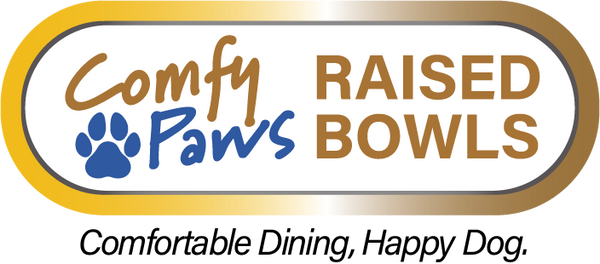Dog Body Language - What Is Your Dog Telling You?

Dog body language - how do you know what your pet is trying to tell you?
In this post, we’ll go over common ways dogs use their body language and ways they try to communicate things with us.
Relaxed Body Language
Relaxed dogs are happy dogs. This is when your pet feels all is right with their world and is feeling its best. Their body signs say, "I like you, I like life!"
Relaxed dogs may scamper and feel playful, often happily wagging their tail. Their ears will be relaxed and natural, and their eyes will be soft and gentle. The mouth may be slightly open but will have no tension. Your dog may even lightly pant.
Overall, your pet will be at ease with their surroundings.
Anxious Body Language
An anxious dog generally stands in a tense posture with a tucked tail.
It will often hold its ears partially back and lower its head. It may furrow its brow or have tension around its forehead and mouth.
An anxious dog can overreact to stimulation and become aggressive or fearful.
Try to gently remove it from the situation that is causing it stress.
Fearful Body Language
A fearful dog will show body language signs similar to an anxious dog.
They may whine or growl in self-defense and stand stiffly, hunched. They often tuck their tail between their back legs, trembling and shaking.
Most dogs will turn their head away from whatever is frightening them but keep their eyes locked on the subject. Their pupils may also dilate as an indicator that they are afraid.
As a pet owner, find what is bothering your pet and solve the issue so they can feel safe, secure, and unafraid.
Aggressive Body Language
Aggression is usually a sign that anxious and fearful body language signals have been ignored.
Your pet is taking more extreme measures to remedy the situation and feels they must protect themselves.
An aggressive dog will plant its feet firmly on the ground and lunge forward. Usually, the ears are pinned back, and the eyes are narrowed and flaming.
The tail is typically straight up, and the dog may show its teeth, snarl, or bark. Its hair will stand on edge, and its head will be held high.
In this situation, a dog can become dangerous, potentially biting or injuring others. It is wise to remove the dog from the situation so it can calm down.
Playful Body Language
Your pet may jump, run, or roll when excited and playful.
Their eyes will be wide, and they may pull on their leash or jump. Often, they will bark loudly to gain attention.
Their body language will be similar to when they are happy. They may wag their tail gently and look relaxed but excited.
Excitement and playful body language are good but can become overwhelming if unchecked.
Taking your dog on a walk or playing an active game is a great idea when they seem to have boundless energy.
Investing in a raised dog bowl will help mealtimes be easier with active dogs.
Tired Body Language
You’ll know your pet is getting tired when it doesn’t act like itself anymore.
It may forget commands, yawn, be excessively hyper, or be restless. It is a good idea to recognize that your pet may need a nap and empower it to take one.
They will feel much more like themselves later after they’ve rebooted.
Have you learned anything about dog body language?
We wish you and your pet all the best in learning to communicate with each other!
